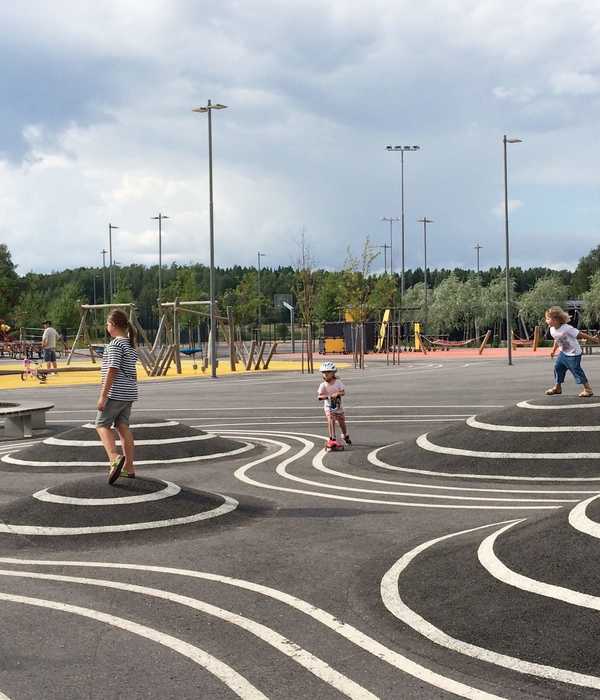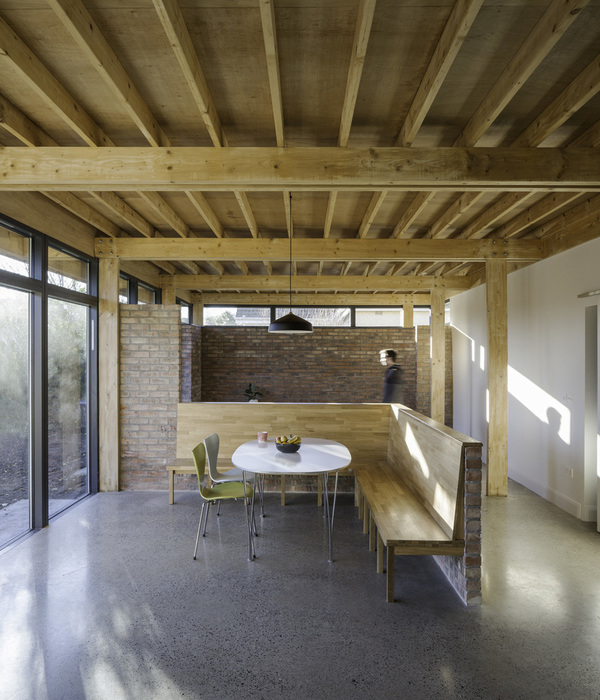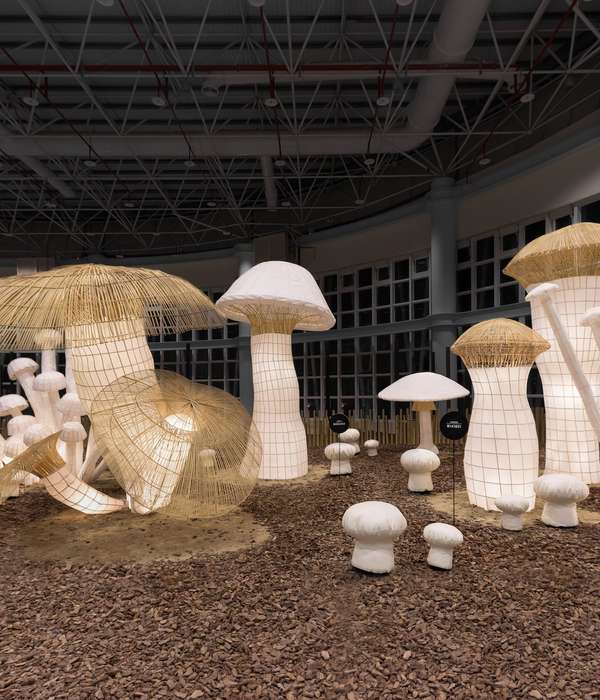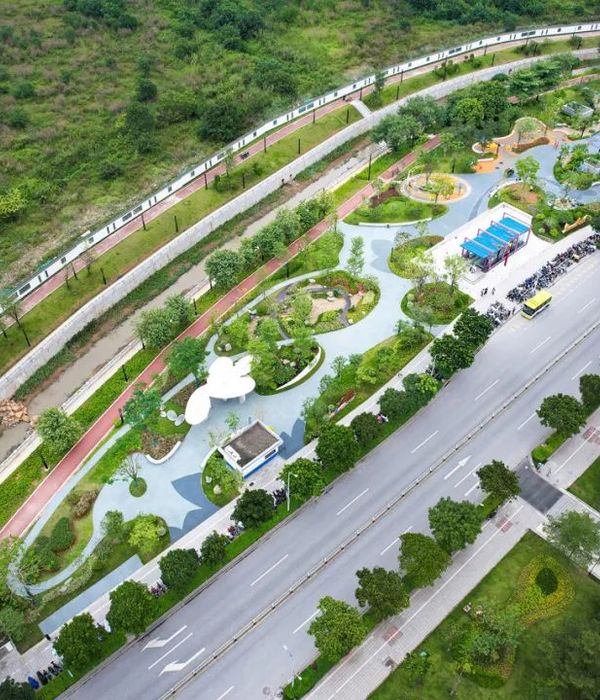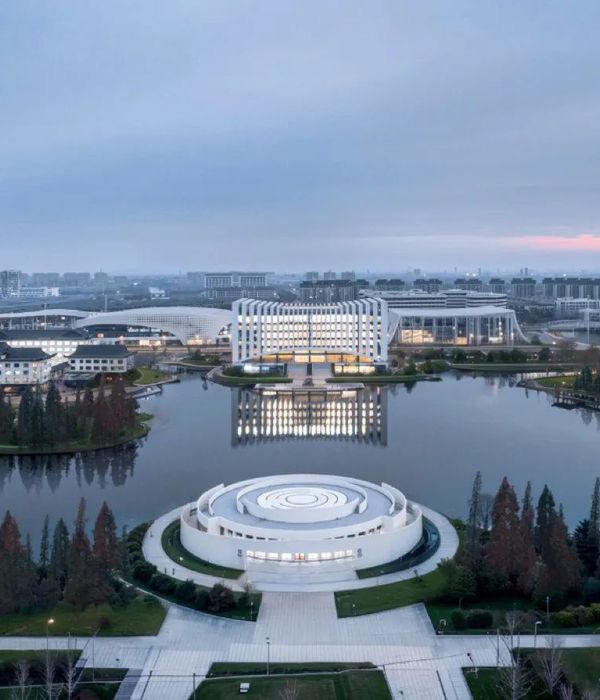本项目旨在改善意大利Paspardo市n.94遗产地的可达性,使人们可以与这片场地交流,并且加深人们对景观和考古遗址的认识。
The aim of the project is to improve the accessibility to the historiated rocks of the UNESCO site n.94 in the municipality of Paspardo. With this pretext, the intervention aims to increase the perception of the landscape and archaeological heritage by offering itself as a useful communication tool for all types of users.
▼项目概览,overview
该项目位于高速公路SP88一旁的林区,是可以俯瞰Camonica山谷全景的天然露台。这里作为联合国教科文组织指定意大利的第一个遗产地,以拥有巨大的考古岩石而闻名。设计团队根据地形打造了一条约80米长的路径,在加强了该区域可达性的同时,保留了原场地的风格。这个路径可以将游客从入口亭子处的停车场引导到第一块考古巨石。
▼区位分析图,site location diagram
The project is part of a wooded area along the highway SP88, a natural terrace overlooking the Camonica valley. This place, named the first UNESCO site in Italy, is home to numerous significant historical rocks. In order to make the area accessible to everyone and, at the same time, to integrate the new elements harmoniously with the natural context, the intervention exploits the topography forming a continuous ribbon about 80 meters long. This structure guides the visitor from the parking lot, near which it’s located a triangular stone pavilion, to the first and most significant rock.
▼约80米长的路径,a continuous ribbon about 80 meters long
如缎带般延伸的传声器装置使人回想起祖先们打磨石器的声音,提示着古老岩石的存在。该项目主要考虑两个方面的问题:一方面,如何消除普通游客与残疾游客之间的差异;另一方面,如何体现出文化和景观遗产的传递信息的能力。
▼装置示意图,installation illustration
In this place the ribbon modifies its shape becoming a sound device that, recalling the ancestral sounds of the incisions, signals the presence of the rock. The main idea of the project raises from two different points: from one side it aims to overcome the common division between abled and disabled users; on the other, it reflects on the ability to transmit information in the field of cultural and landscape heritage.
▼如缎带一般的装置形状与传声器类似,the ribbon modifies its shape becoming a sound device
本项目不仅对残疾人、老年人、儿童等各种群体友好,而且还可以在与游客交互的过程中刺激他们在记忆深处的感觉和情绪。装置的设计使其可以通过振动、涂层材料的变化以及瓷砖的特殊雕刻来同时刺激视觉、听觉、触觉等多种感官。入口处的亭子里有信息咨询处,介绍该装置的多重体验方式。
In this sense, the intervention not only makes the area accessible to all (disabled, elderly, children, etc.) but it is intended as a device capable of interacting with the individual perception in order to generate sensations and emotions useful to fix the memento of place and experience in the visitor’s memory. For this reason, the structure stimulates multiple human senses: the sight, the hearing through an analogue sound reproduction device, and the touch through the vibrations diffused by the structure, the changes of coating material and the special carved tiles. The device allows new and multiple experiences of the place, while all the general information is presented inside the pavilion at the entrance.
▼装置的端头,one end of the device
▼水泥制成的听觉装置细部,details of the cement bell
项目通过与Valcamonica社区共享资源、材料、技能和工艺,实现了与当地社区的协同发展。在与Cooperative “Il Cardo”进行了初步调查后,设计团队决定主要解决老年人和残疾人对可达性以及感官方面的需求等问题。为了鼓励社区全民参与该项目,设计团队与Cooperative “Il Cardo”举办了一个社区研讨会,共同商讨覆盖在金属支架上的混凝土瓦片的设计方案。图纸诠释了刻在扶手上的图案,同时这种雕刻的方式也使其成为一个触觉装置。该结构的金属支架、包层砖以及水泥制成的听觉装置由当地工匠负责建造,虽然形式简单,却有着很强的功能性。
From the beginning the project develops itself in synergy with the local community, through the use of resources, materials, skills and crafts typical of the Valcamonica territory. Some preliminary surveys, carried out together with the Cooperative “Il Cardo”, have made it possible to identify the main problems of accessibility and perception, for elderly and people with disabilities, that the intervention, in its simplicity, has tried to eliminate.In order to encourage community participation in the project it was organized a workshop, in collaboration with Il Cardo, for the design of the concrete tiles that cover the structure. These are drawings that reinterpret the ones on the engraved rocks and, at the same time, personalize the structure making it a tactile device. The structure, formally very simple but articulate in its functioning, was realized thanks to the skill of local artisans who took care of building the metal support, fabricating the cladding tiles, creating the cement bell and the analogic sound mechanism.
▼混凝土瓦片上的图案,the graphic pattern of the concrete tiles
▼图纸对混凝土扶手上图案意义的诠释,drawings that reinterpret the ones on the engraved rocks
▼平面图,plan
▼装置轴测图,axon of the installation
Authors: Babau Bureau and Elisa Brusegan Team: Massimo Triches (1984); Elisa Brusegan (1983); Stefano Tornieri (1985); Marco Ballarin (1984) Collaborators: Luisina Mainero, Riccardo Modolo Consultants: Cooperativa Il Cardo, Riserva Naturale delle Incisioni Rupestri di Ceto Cimbergo e Paspardo Design: Ducom Design, Crea Concrete Design Client: Comunità Montana di Valle Camonica Location: Paspardo, Italy Year: 2017
{{item.text_origin}}




